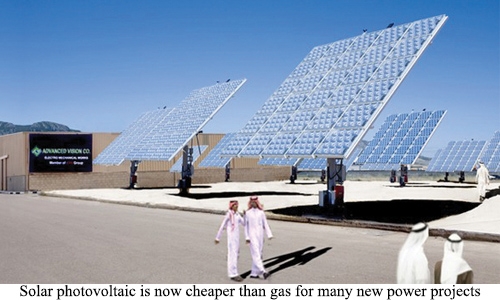Renewable energy to drive the future of Middle East
Renewable energy market in the Middle East is set to have an exciting year ahead, but with challenges, says a joint report by law firm Eversheds and management consultant PwC.
Characterised by a new low-cost environment, wind and solar developments attracted strong international interest and new projects in 2015.
Solar photovoltaic is now cheaper than gas for many new power projects in the region. But instead of renewable “competing” with conventional power, their ability to complement and neatly fit into an energy system is now more widely understood, the report says.
PwC noted in the report that there has been no evidence of slowing down of renewable-energy market, as was expected due to the oil-price decline and that in the long run, it would help Middle East nations to reduce their oil dependency and diversify energy mix.
“Energy (and water) security remains an utmost priority for decision-makers across the region. We are hence seeing a continued thrust for new renewable energy projects – despite low oil prices – and we’re observing increasing targets for renewable energy shares in 2020 and 2030” PwC Power and Utilities Leader Jonty Palmer.
Eversheds noted the Middle East and North Africa region has some of the best renewable energy resource globally.
Pointing out that three key developments stand out regarding the opportunity in the region for renewable energy, Eversheds Global Head of Clean Energy Michelle T Davis said in the report: “First, the maturity of the core technologies has made these projects significantly more bankable and marketable…, the second development has been an acceptance that storage has the potential to, and very likely will, completely turn traditional power market models on their head…, the third change we have seen is the potential and appetite for market disruption. It seems that the power sector is asking not if, but when. This means that our sector, as ever, will continue to be nimble, prepared and successful.”
Also, storage cost curves are reducing rapidly with many accepting those similar to silicon along with the fact that software technology is allowing aggregation of storage and renewable energy generating solutions to operate on rapid demand response times so as to create virtual power plants.
Related Posts

